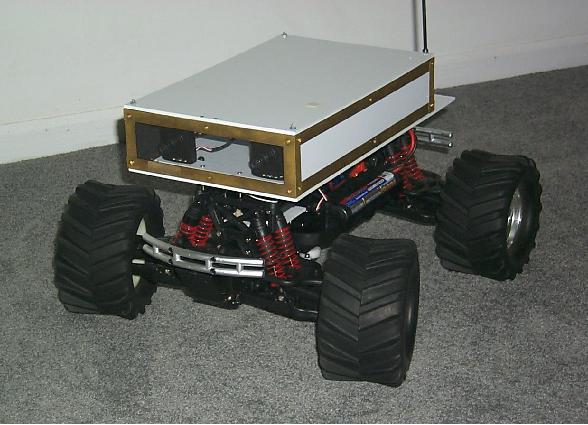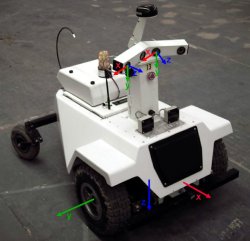 |
|
Introductory course on machine learning, pattern recognition, neural nets,
statistical modeling for undergraduates.
Instructor: Yann LeCun, 715 Broadway, Room 1220, x83283, yann [
a t ] cs.nyu.edu (note: new room number).
Teaching Assistant: Raia Hadsell, 715 Broadway, 10th floor, raia [ a t ] cs.nyu.edu.
Classes: Tuesdays and Thursday, 3:30-4:45PM, Room 102, Warren Weaver Hall.
Computer Lab: Room 512, Warren Weaver Hall.
Office Hours for Prof. LeCun: Wednesdays 2:00-4:00 PM
Office Hours for Raia: TBA
Click here for schedule and course material >>>
|
 |
|
This course will cover a wide variety of topics in machine learning,
pattern recognition, statistical modeling, and neural computation.
The course will cover the mathematical methods, theoretical
aspects, algorithms, implementation issues, and applications.
Machine Learning and Pattern Recognition methods are at the core of
many recent advances in "intelligent computing". Current applications
include machine perception (vision, audition, speech recognition),
control (process control, robotics), data mining, time-series
prediction (e.g. in finance), natural language processing, text mining
and text classification, bio-informatics, neural modeling,
computational models of biological processes, and many other areas.
|
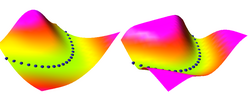
|
| Who Can Take This Course? |
|
This course can be useful to all students who would want to use or
develop statistical modeling methods. This includes students in CS
(AI, Vision, Graphics), Math (System Modeling), Neuroscience (Computational
Neuroscience, Brain Imaging), Finance (Financial modeling and
prediction), Psychology (Vision), Linguistics, Biology (Computational
Biology, Genomics, Bio-informatics), and Medicine (Bio-Statistics,
Epidemiology).
The only formal pre-requisites are familiarity with computer
programming and linear algebra, but the course relies heavily on such
mathematical tools as probability and statistics, multi-variate
calculus, and function optimization. The basic mathematical
concepts will be introduced when needed, but the students will be
expected to assimilate a non-trivial amount of new mathematical
concepts in a fairly short time.
Therefore, the course is primarily for students at the senior and
junior levels.
|

|
The topics studied in the course include:
- the basics of inductive inference, learning, and generalization.
- linear classifiers: Perceptron, LMS, logistic regression.
- non-linear classifiers with linear parameterizations:
basis-function methods, boosting, Support Vector Machines.
- multilayer neural networks, backpropagation
- heterogeneous learning systems
- Energy-based models, loss functions
- optimization methods in learning: gradient-based methods,
second-order methods.
- Probabilistic models, Bayesian methods,
the Expectation-Maximization algorithm.
- graph-based models for sequences: Hidden Markov Models,
finite-state transducers, recurrent networks.
- unsupervised learning: density estimation,
clustering, and dimensionality reduction methods.
- introduction to graphical models and factor graphs
- approximate inference, sampling.
- Learning theory, the bias-variance dilemma, regularization, model selection.
- applications in computer vision, handwriting recognition, speech recognition, robotics,
natural language processing, financial forecasting, biological modeling...
By the end of the course, students will be able to understand,
implement, and apply all the major machine learning methods.
This course will be a adapted version of the graduate course
G22-3033-002 taught in Fall 2004. Please visit the site
of the Fall 2004 Graduate-level version of this course to have a look at the
schedule and source material.
|
|
The best way (some would say the only way) to understand an algorithm
is to implement it and apply it. Building working systems is also a
lot more fun, more creative, and more relevant than pen-and-paper problems.
Therefore students will be evaluated primarily on programming projects
given on a 2 week cycle. There will also be a final exam and a final
project.

|
Linear algebra and good programming skills are the only formal
pre-requisites, but the course will use such mathematical concepts
as vector calculus (multi-dimensional surfaces, gradients, Jacobians),
elementary statistics and probability theory (Bayes rule,
multi-variate Gaussian).
Good programming ability is a must: many assignements will
consist in implementing algorithms studied in class.
For most programming assignement, a skeleton code
in the Lush language will
be provided. Lush is an interpreted language that makes it easy
to quickly implement numerical algorithms.
The course will include a short tutorial on
Lush.
Lush can be downloaded and installed on Linux,
Mac, and Windows (under Cygwin).
See Chris Poultney's
notes on installing Lush under Cygwin.
Lush is available on the CIMS Sun
workstations.
Programming projects may be implemented in any language, (C, C++,
Java, Matlab, Lisp, Python,...) but the use of a high-level
interpreted language with good numerical support and and good support
for vector/matrix algebra is highly recommended (Lush, Matlab,
Octave...). Some assignments require the use of an object-oriented
language.
|

|
Register to the course's mailing list.
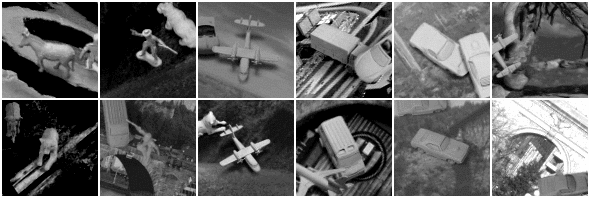
Richard O. Duda, Peter E. Hart, David G. Stork: "Pattern Classification"
Wiley-Interscience; 2nd edition, October 2000.
I will not follow this book very closely. In particular, much of the
material covered in the second half of the course cannot be found in
the above book. I will refer to research papers and lectures notes
for those topics.
Either one of the following books is also recommended, but not
absolutely required (you can get a copy from the library):
- T. Hastie, R. Tibshirani, and J. Friedman:
"Elements of Statistical Learning",
Springer-Verlag, 2001.
- C. Bishop: "Neural Networks for Pattern Recognition", Oxford
University Press, 1996. [quite good, if a little dated].
Other Books of Interest
- S. Haykin: "Neural Networks, a comprehensive foundation",
Prentice Hall, 1999 (second edition).
- Tom Mitchell: "Machine Learning", McGraw Hill, 1997.
| Machine Learning Research at NYU |
Please have a look at the research project page of the
Computational and Biological Learning Lab for a few example
of machine learning research at NYU.
There are opportunities for undergraduate research projects.
Contact Prof. LeCun for details.
Code
- Lush: A simple language for quick
implementation of, and experimentation with, numerical algorithms
(for Linux, Mac, and Windows/Cygwin). Many algorithms described in this
course are implemented in the Lush library. Lush is available on the
department's Sun machines that are freely accessible to students
in the class (WWH Room 512).
See Chris Poultney's
notes on installing Lush under Cygwin.
- Torch: A C++ library for machine learning.
Papers
Some of those papers are available in the DjVu format.
The viewer/plugins for Windows, Linux, Mac, and various Unix flavors are
available here.
Many papers are available from Prof. LeCun's publication's
page.
Here are a few paper that are relevant to the course.
- Y. LeCun, L. Bottou, Y. Bengio, and P. Haffner,
"Gradient-Based Learning Applied to Document Recognition,"
Proceedings of the IEEE, vol. 86, no. 11, pp. 2278-2324, Nov. 1998.
[PS.GZ]
[DjVu]
- Y. LeCun, L. Bottou, G. Orr, and K. Muller, "Efficient BackProp,"
in Neural Networks: Tricks of the trade, (G. Orr and Muller K., eds.), 1998.
[PS.GZ]
[DjVu]
- P. Simard, Y. LeCun, J. Denker, and B. Victorri,
"Transformation Invariance in Pattern Recognition, Tangent Distance and Tangent Propagation,"
in Neural Networks: Tricks of the trade, (G. Orr and Muller K., eds.), 1998.
[PS.GZ]
[DjVu]
Publications, Journals
Conference Sites
Datasets
| Demos and Pretty Pictures |
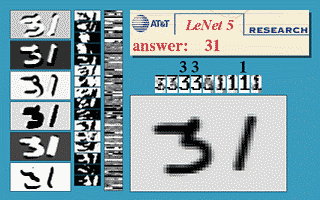
More demos are available here.
Object Recognition with Convolutional Neural Nets
 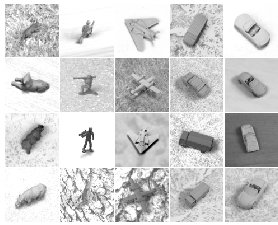
|
 |







